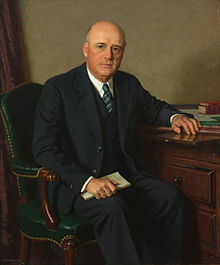Ask anyone who has lived in Greenville or other parts of Northeast Texas for a long time who they has done the most benefit for the area and the answer will probably be Representative Sam Rayburn. Some say that during the Depression many farmers hung photographs of Franklin D. Roosevelt and Sam Rayburn on their living room walls. Mr. Sam truly represented all of his constituents from 1913 until his death in 1961. He served forty-eight consecutive years after being elected twenty-four times.
For seventeen years of his terms, Rayburn held the crucial position of Speaker of the U. S. House of Representatives with the ability to greatly influence legislation. As a leading supporter of the New Deal, Rayburn saw that his Texas District Four received rural electrification, numerous Public Works Administration and Works Progress Administration projects such as the Greenville Municipal Building and a dormitory at what is now Texas A&M University Commerce, and highway funding.
It is interesting to note that in 1930 only 10% of the rural residents of Northeast Texas had electricity. By 1955 the rate had risen to 90%. Congressman Rayburn proudly explained how electricity would make farm life so much easier, a task he took to heart.
As events in Europe became more critical, it was evident to the United States that war was looming. Federally funded airports, hospitals, training schools sprang up throughout the country, including Northeast Texas. Greenville residents can thank the local Rotary Club and Mr. Sam for the designation of a pilot training school south of town. Opened in early 1942 Majors Field trained numerous pilots, including those men in the 201st Mexican Fighter Squadron. Near the end of the war, Rayburn and Texas Senators Lyndon Johnson and Tom Connally negotiated an agreement with the War Department to convert several of these airfields to civilian use. Majors Field was among them. Today the field is home to L-3 Communications Corporation, the largest employer in the county.
After World War II, Rayburn was instrumental in passing a minimum wage law, expanding social security benefits, and establishing federal aid to housing. Highways such as Farm-to-Market roads found in rural areas, and the Interstate web of cross-country highways came into existence thanks to the work of Mr. Sam.
A lifelong Democrat, Sam Rayburn did not feel integration was viable until the end of World War II when he helped pass the Civil Right Act of 1957. Yet, many of his constituents benefited enormously from it.
After years in politics, Sam Rayburn’s eyes began to wear out. His health declined but he still worked hard for the people of Northeast Texas until his death November 16, 1961. His body was returned to his beloved farm near Bonham, Texas. After the funeral service the body was transported to Willow Wild Cemetery in rural Fannin County where other family members were buried.
The country lost a statesman but Northeast Texas lost a very good friend. Mr. Sam was briefly married to the sister of a fellow Texas congressman. For reasons never known to anyone, they separated and divorced within a year. Mr. Sam was one of those men who was wedded to his work.
The latest issue of the Southwestern Historical Quarterly (October 2016) had an article about Margaret Fallon (Peggy) Palmer, Mr. Sam’s supposed lady friend. While it remains that the two were close, there were too many obstacles to any deep relations. To put it bluntly, Mr. Sam’s constituents would have been appalled. If you can find a copy, read it. Otherwise go to http://www.rayburnmrspeaker.com. There was a great article a few years ago in the East Texas Historical Journal that focused on Northeast Texas and Mr. Sam. Find it at http://scholarworks.sfasu.edu/ethj. Both are great tributes to a great man.

